Leaf-footed bugs are members of the Coreidae family of insects, which are primarily sap-suckers. These strange pests are so named because of the leaf-shaped flair located on each hind leg. They are approximately 1/2″ to 3/4″ in length, not including their long antennae. The adults range in color from gray, tan, brown, and black. Some adults have a white horizontal mark across their backs.
Leaf-footed nymphs also vary in color. Their abdomens can be yellow, orange, or bright red, while their legs are dark. Their feet may be dark or brightly colored. They also have two dark spots on their swayed backs, near the lower abdomen, making them look strikingly like assassin bug nymphs, which are beneficial insects.
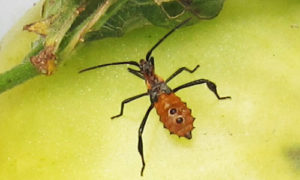
One way to tell the two species apart is by the small leaf-life protrusion on the leaf-footed nymph’s hind legs, although it will be less pronounced than an adult’s. The assassin bug, on the other hand, does not have this characteristic.
Another way to differentiate between them is that leaf-footed nymphs are often found in groups, as opposed to assassin bugs that tend to be solitary. What’s more, leaf- footed bugs eat plant matter whereas, assassin bugs eat other insects.
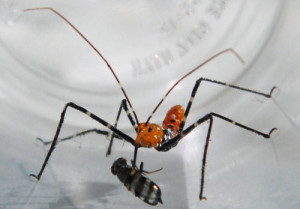
Adult leaf-footed bugs are often confused with adult squash bugs (also members of the Coreidae family), as wells as stink bugs and assassin bugs because they are similar in size, shape, and color. They are easily distinguished, however, as the other insects do not have the leaf-shaped flair on their hind legs.
The adult leaf-footed bugs often overwinter in groups, usually beginning in the late fall, preferring woodpiles, weeds, brush, plants, trees, sheds, or anywhere they can find protection from predators and the elements. They will emerge in the late spring when the temperature warms.
Life Cycle
Once the adult leaf-footed bugs emerge from hiding in the spring, they will begin their search for food and a place to lay their eggs. They prefer to lay their eggs on plant leaves, often along the stems or ridges. Depending on the variety, one adult female can lay up to 200 eggs in the spring.
The adult females lay their brown or copper-colored, cylindrical eggs end to end, like a chain. However, some species lay more spherically shaped eggs that are cream or light yellow. I once caught a leaf-footed bug and placed it in a jar for observation. Much to my surprise, it laid cream-colored eggs on leaf debris that was in the jar.

Once the nymphs hatch from the eggs, they will go through different instars or stages of development. As they mature, they will lose their bright color and take on more of the traditional color and shape of the adults.
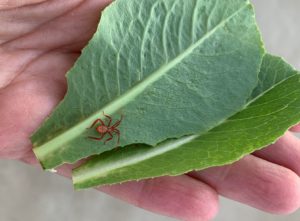
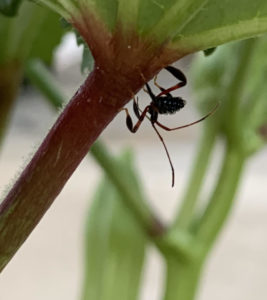
Friend or Foe?
Leaf-footed bugs are not beneficial insects. Although their cousin, the squash bug, poses more of a threat to vegetable gardens, leaf-footed bugs should not be considered harmless. They use their proboscis, which is kept against their abdomen, to pierce leaves, stems, and fruit so they can suck the sap or juice from them. Both adults and nymphs will feed on the leaves of ornamental and vegetable plants, which may cause only slight visual damage. However, according to the University of California Agriculture and Natural Resources, when they feed on young fruit, such as tomatoes, it can cause the fruit to abort. Other concerns include the chance that fungal spores may enter the feeding site, not to mention the unappealing excrement left behind if there is a large aggregate of bugs.[1]
Leaf-footed bugs feed on a wide variety of plant matter. Depending on the species, some prefer tomatoes and pomegranates, while others target citrus fruits, apples, or berries. Some like cucurbits, such as squash, zucchini, and cucumbers, while others like eggplant, okra, black-eyed peas, cowpeas, nuts, tomatoes, peppers, and even prickly pears. They will also feed on ornamental plants like the hibiscus. Weeds and weed seeds are also on the menu, especially when they emerge in the spring, which gives you another reason to remove the weeds in your yard and garden.
The occasional leaf-footed bug shouldn’t cause alarm, but when they increase in population is when the trouble can start. I often find them in my garden and dispatch them when I can. I also inspect my plants regularly for eggs and nymphs.
How to Organically Control Leaf-Footed Bugs
Remove the Insect by Hand
Although leaf footed bugs can fly, you’ll usually find them stationary in your garden. When they do move, they will walk slowly. Thus, it’s quite possible to remove them by hand and either smash them or drop them in a container of soapy water. It’s quick, inexpensive and safe for your plants.
Similar to the shield-shaped stink bug, leaf footed bugs may release an odor when stressed or killed. I’ve dispatched many of these sap suckers but I have never experienced an odor. Nevertheless, consider yourself forewarned.
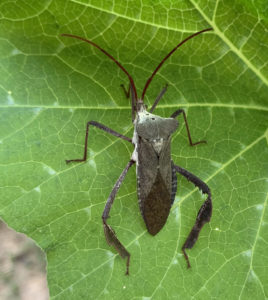
Remove the Eggs
One of the best ways to control leaf-footed bugs is to remove their eggs. You’ll find them on the underside of leaves, but don’t rule out the tops of the leaves or elsewhere on the plant. Scrape the eggs into a container and smash them or fill the container with soapy water if you’d prefer. You can also loop a piece of duct tape to pick up the eggs, then fold it over and smash them.
If you find that you are having a hard time keeping the population under control, you can also trying implementing one or more of the remaining measures.
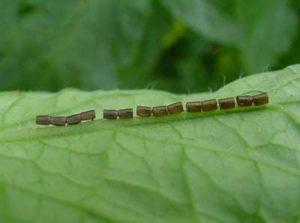
This article contains affiliate links. If you make a purchase using one of these links I will receive a very small commission at no additional cost to you, and it will help me maintain this website. Rest assured, I only recommend products I actually like!
Insecticidal Soap
Insecticidal soap is an option if you need to take a more assertive measure to control leaf-footed bugs. It will be more effective on the nymphs than on adults because they are soft-bodied.
You can easily and inexpensively make your own by adding two tablespoons of a Castile soap, or other chemical-free soap, to a one-gallon sprayer filled with water. (By filling the container with water first and then adding the soap, you’ll be able to minimize the suds.) Be sure to mix well.
Always do a test spray on one leaf and wait 24-48 hours to see if there are any adverse reactions. If all goes well, spray the plant, including the underside of the leaves, but there is no need to over saturate it. Repeat every seven days if there is a problem. Remember not to spray during the day as it could burn your plants. If you have any mixture leftover, it can be stored in a dry, cool location for a few months.
Diatomaceous Earth
To control leaf-footed bugs, you can dust your plants with food-grade diatomaceous earth (DE), which is a fine powder-like substance made from fossilized marine life. When an insect moves across the powder, sharp micro-fragments scrape the exoskeleton causing it to die. For this reason, you may want to wear eye protection and avoid inhaling the powder as it could potentially harm your lungs.
DE can harm bees and other pollinators, so be sure to dust your plants late in the day when they are no longer around and avoid dusting flowers.
You will need to reapply DE if it becomes wet.
Neem Oil
Neem oil comes from the seeds of the neem tree, an evergreen from India. It works well on a variety of insects, including squash bugs, squash vine borers, and aphids. Neem oil works differently than insecticidal soap in that it does not kill the insects right away. Instead, it interferes with their hormones and prevents them from reaching maturity and reproducing. Neem oil also serves to repels insects.
Commercially available sprays can contain harmful chemicals in addition to the neem oil. I make my own spray by mixing 1-2 teaspoons of pure, cold-pressed neem oil (this is the one I use) with the naturally occurring compound, Azadirachtin (which makes it more effective) with 1/2 teaspoon of Castile soap, and 1 quart of water. Again, always do a spray test on a leaf and wait 24 to 48 hours to see results before spraying the rest of the plant. Repeat if necessary every three to seven days if there is an infestation. Do not spray during the day as the combination of sun and oil could burn your plants.
Prevent Leaf Footed Bugs From Getting a Foothold
Remove Weeds
Leaf-footed bugs not only eat weeds in the early spring before they move into your garden, but they also overwinter in them. Keep weeds, tall grass, and overgrown brush under control, and you’ll reduce, if not eliminate, these and other pests.
Eliminate Places Where They Can Overwinter
Remove wood and or brush piles where adult leaf-footed bugs may overwinter. Also, remove any other debris where they might hide.
Install Row Covers
You can install row covers, or a similar light mesh material to cover your container garden, to protect crops, like tomatoes, that may be more sensitive to leaf-footed bugs. The downside to this method is that it will also keep out the pollinators and other beneficial bugs, which can cause non-beneficial bug populations, like aphids, to increase.
Attract Natural Predators
Natural predators include, but are not limited to, spiders, assassin bugs, and birds. Also, tachinid flies, which look similar to house flies, may lay their eggs on the leaf-footed bugs. When the larvae hatch, they will burrow into their host and kill it. Tachinid flies like to feed on pollen, especially from herbs like dill, as well as carrots and flowering plants.

You’ll also need to refrain from using chemical pesticides and insecticides, which can harm the natural predators.
Leaf-footed bugs are strange but fascinating insects that may not pose a threat to your garden if they are few in number. However, if their numbers increase, they can damage plants and fruit alike.
Note: If you found this article to be helpful, please share it with someone you think might be interested in it as well. Thank you!
[1] University of California Agriculture and Natural Resources, May 2014, accessed August 17, 2020, http://ipm.ucanr.edu/PMG/PESTNOTES/pn74168.html
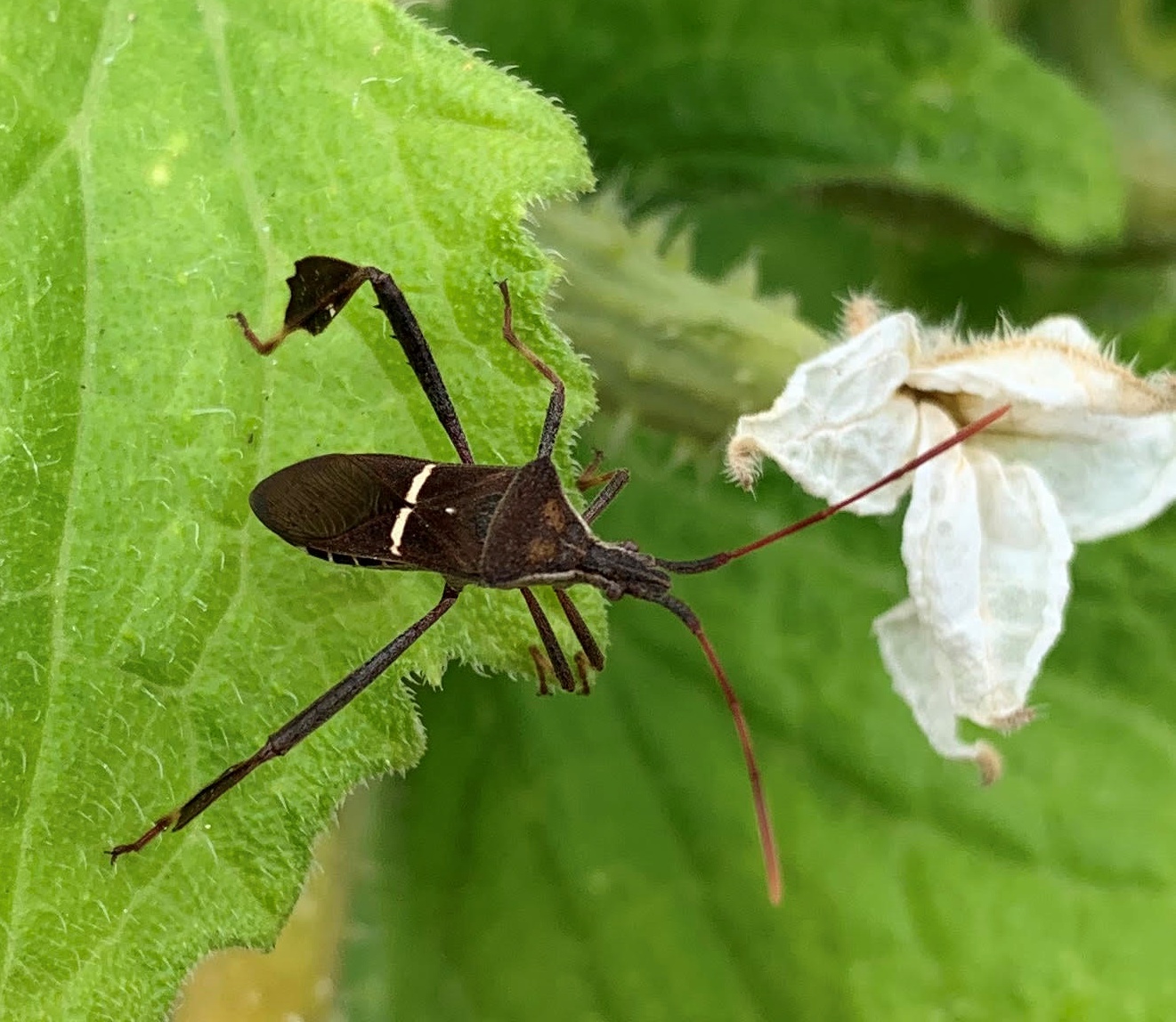
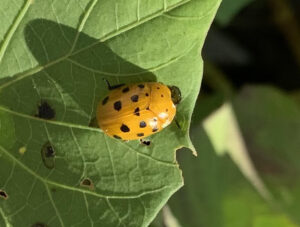
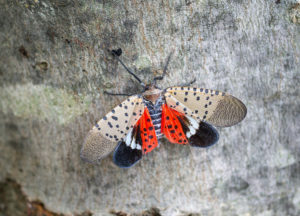
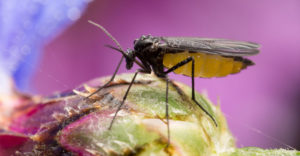
Thank you so much for this excellent information! Unfortunately, I thought the nymphs I was seeing were assassin bugs, and didn’t dispatch them since I also grow roses and they’re a helpful bug. Now I know better and will be on the lookout!
You’re welcome, Kellie! Thanks for letting me know that it was helpful! You are not the first one to misidentify them! They look so similar.
Best wishes for a bountiful summer garden!
Hildy
These PESTS have annihilated my Fig (cut down), tomatoes ( all lost), every blossom and bud on hibiscus plant (all fell off) and other prime plants. I sprayed dish soap water, 7-dust, Clorox/water solution, and now neem oil extract daily. Hundreds of nymphs still remain. Will use antibacterial soap mix with Neem Oil extract daily (rain showers/storms are consistent in my area). will not risk another veggie garden nor flowering plant until this PEST has been terminated.
Sounds like quite the infestation! Best wishes in eradicating them!